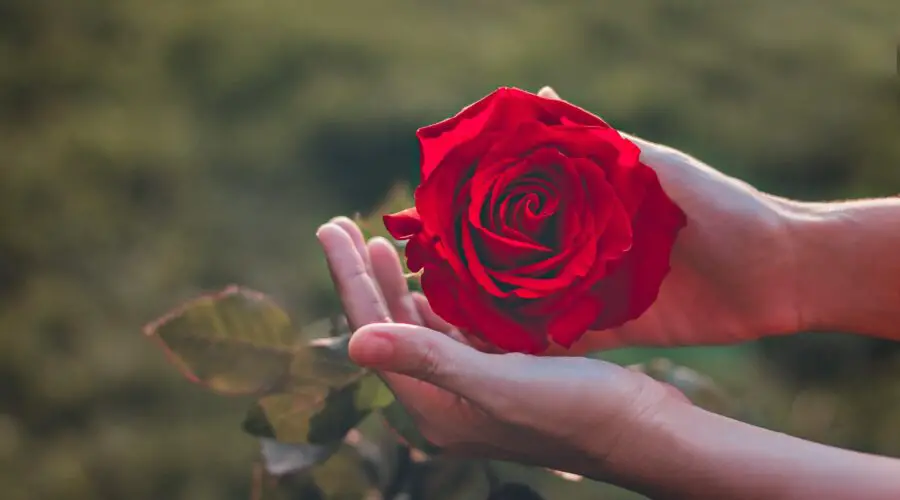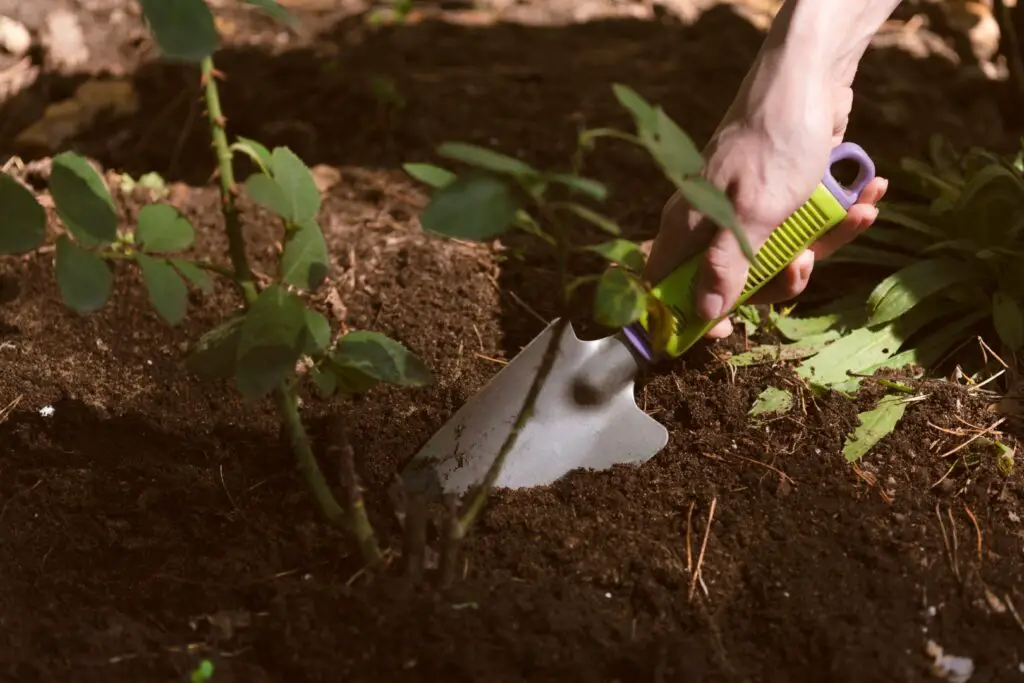How To Grow And Care For Different Types Of Roses
It’s hard to argue with the grace and fragrance of roses. There’s a reason why these beauties grace the gardens of The White House and Buckingham Palace and find themselves center stage in wedding bouquets and boutonnieres at high school dances. If you’re interested in having some in your yard, there’s no need to worry. Growing and caring for roses is quite similar to growing other flowering ornamentals in your garden. Once you know the basics, you’ll feel like a pro in no time!
The Three Categories of Garden Roses
There are over 150 different varieties of garden roses and thousands of cultivars. To help classify this vast array of plants, garden roses are organized into three primary categories: old types, modern types (sometimes called hybrids), and wild types. The categories are based on the roses’ history, growth habits, and breeding making each unique in its own way.
Old Roses
Also known as heritage or antique roses, the old type has been around for about 150 years without any breeding changes. Varieties in this category flower once a season and are known for their strong scent.
Modern Roses
Modern roses are selectively bred from old types, combining their best characteristics. The new hybrids have bright, bold colors, unique fragrances, and specific flower sizes.
Wild Roses
Wild varieties have grown for thousands of years, unaltered, with little or no help from humanity. They generally bloom in white, pink, and red hues and have brightly colored hips.
The Different Rose Subcategories Explained
The three main categories are broken down into numerous subcategories to differentiate the rose types further. Some classifications are based on the roses’ growing habits, and some are based on blooming characteristics or the breeding history.
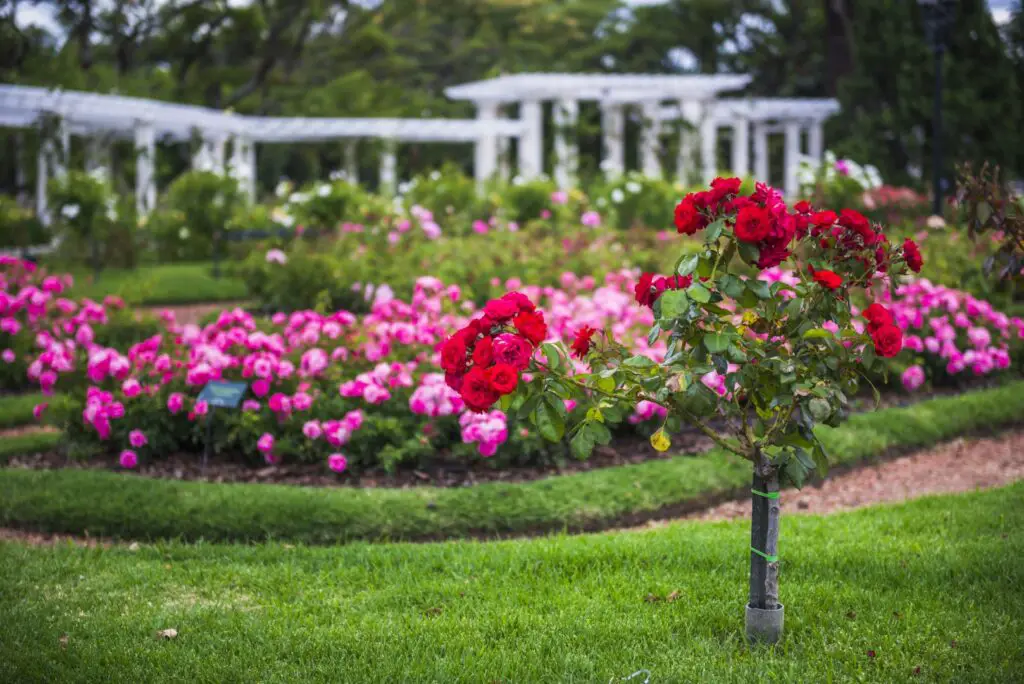
Alba
An extremely hardy heirloom type of rose dating back to 100 A.D., flowers are very fragrant and available in pale pink and white shades.
Bourbon
This type may be a hybrid of China and Damask roses. The plants bear heavily fragrant, large, full blooms.
Centifolia
Centifolia roses only bloom once during the early summer, with blooms resembling a head of cabbage with thin, tightly overlapped petals.
China
The blooms on China roses are more exotic than other types. They are compact and bushy, emitting a lovely fragrance. Plants are disease-resistant but not cold tolerant.
Climbing
Climbing roses grow long vines or canes that reach up to 15-feet long that you can train to grow along a trellis, arbor, or other support.
Damask
The two varieties, Summer and Autumn Damask, are exceptionally fragrant and date back to biblical types, making this subcategory the oldest.
English
Also known as David Austin roses, English roses come in hundreds of varieties with the fragrance of old types but the continuous blooms and colors of more modern ones.
Floribunda
A favorite with many, Floribunda types bloom continuously, displaying a large cluster of flowers. They are easy to grow and demand very little care.
Gallica
Another ancient type, Gallica roses, dates back to the 12th century. These incredibly hardy plants bloom once per season and are often used to scent perfumes.
Grandiflora
A combination of floribunda and hybrid tea roses, Grandiflora has a constant growth period, so it flowers for longer, presenting showy clusters of blooms.
Groundcover
Often called “landscape” roses, this low-maintenance type grows outward instead of upward, staying shorter.
Hybrid Tea
Hybrid teas are among the most popular types, with thousands of available varieties. Ornate blooms sit atop long, sturdy stems for up to 7 weeks.
Miniature
Miniature roses are a compact version of Grandiflora or hybrid teas. They typically grow no more than 3’ tall with smaller blooms.
Polyantha
Similar to floribunda roses, this type stays shorter and has smaller blooms.
Shrub
Shrub roses grow upright but rarely get more than 4 to 6’ tall, so they don’t need support. They are cold tolerant and repeatedly produce bountiful clusters of beautiful flowers.
All About Planting Roses
Choose the Correct Timing
Roses should be planted in the spring or the fall when the temperatures are between 40 and 60°F. Try to time planting after the last spring frost or about six weeks before your first autumn frost. This gives plants time to establish strong roots before the heat of summer or before the plant goes dormant for the winter.
With that being said, you can plant them during the summer heat. Still, the stress of the high temperatures can cause new roses to struggle and experience more severe planting shock.
Acclimate Hothouse Roses to Reduce Stress
Suppose you purchased plants from a greenhouse or hothouse. In that case, you need to acclimate them to outdoor temperatures, wind, and direct sun exposure before planting. They are sheltered from these elements when grown indoors—moving them outside quickly without letting them adjust could be detrimental.
Give plants about a week after bringing them home to acclimate. Start by setting them outdoors for a few hours during the day, gradually increasing the time they spend outside, and bring them inside that is warm and protected at night (a garage is excellent). Increase the amount of time they’re outside during the day until it’s time to plant.
Prepare the Planting Hole
When it’s time to plant, use a round point shovel to dig a hole about as deep as the rose’s root ball and slightly wider. Depending on the size of the plant, this is generally about 15-18” deep and 18-24” wide. Use the point of the shovel to scarify the sides of the hole.
Mix a handful of a high phosphorus amendment into the soil you removed. Superphosphate and bone meal are excellent options, but avoid using a high nitrogen fertilizer. The phosphorus promotes root growth, so the roots start growing before the top part of the plant sends out a bunch of new foliage growth.
If your soil is poor or contains a lot of clay, mix finished compost or other organic matter into the removed soil to help improve drainage.
Prepare Your Rose Bush for Planting
Preparing the plant depends on whether you bought a container-grown rose or if your rose is bare-root.
- If you bought a container-grown rose, grip the plant by the base (wear gloves to protect yourself from thorns) and invert the pot or sit it on its slide. You should be able to slip the root ball and potting soil out of the container. Once removed, use your hands to tease and loosen the roots slightly.
- If you bought a bare-root plant, remove the packaging around the roots and inspect the rootball. Using sterilized pruning shears, clip off any rotted or broken roots. Then soak the rose’s roots in a bucket of water for 8-12 hours before planting to rehydrate them.
Setting the Rose in the Planting Hole
Many commercial roses are grown by grafting the top of the desired rose variety onto the rootstock of a species able to withstand adverse conditions. This results in hardy plants with gorgeous blooms. But it also means you need to be careful when planting as the planting depth varies if it’s a grafted rose or not.
- You want the knobby graft union slightly below the soil line when planting grafted roses. When the plant and soil in the hole settle, the graft union will end up buried 1-2” under the surface.
- Plant own-root roses, so the soil level in the pot is about 1” below ground level.
With bare-root roses, you may need to create a slight mound of soil in the bottom of the hole to set the plant at the correct depth.
Once the rose bush is set at the proper depth in the hole, spread the roots out and begin backfilling the hole. Periodically pat the soil down as you go to slightly compact it, removing air holes.
Apply Water and a Layer of Mulch
When the hole is filled, water the soil deeply around the base of the plant. This helps the soil settle and pushes out any air holes created when backfilling. To help retain soil moisture, spread a couple of inches of mulch around the base of the plant, making sure it doesn’t touch the stem.
Caring For Your Newly Planted Roses
There’s a general misconception that roses are too fussy to grow or require high-maintenance care, but this isn’t true. They are pretty easygoing plants if their basic needs are met, meaning they get plenty of sunlight, water, and nutrients. Indeed, not a lot more work than other flowering ornamentals in your yard or garden.
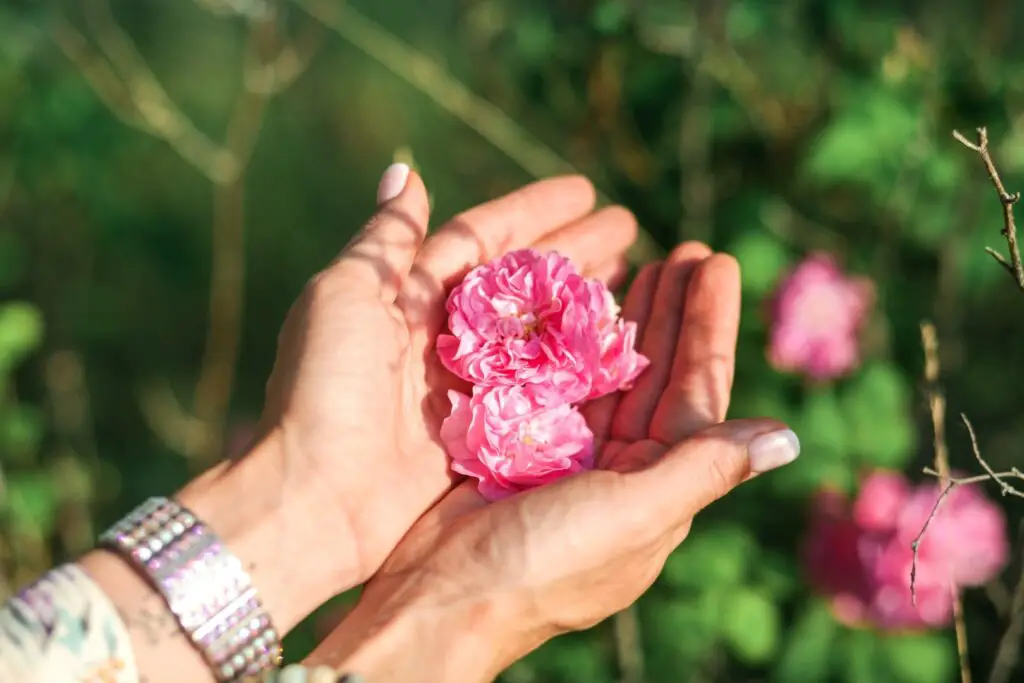
Give Your Plant Plenty of Sunshine
Your rose plant craves sunlight, so it’s crucial to pick a spot in your yard or garden where it will get a minimum of 6 hours of bright sunlight every day. It’s best to choose a place that gets six hours of sun early in the day versus six hours in the afternoon. This is because the afternoon sun is more intense and excessively hot, plus sunshine early in the day dries dampness and dew off the foliage, reducing disease problems.
Watering Your Rose Regularly and Thoroughly
Roses need moderate water during the growing season, so aim to provide about 2 gallons every week.
At first, you should water newly planted rose bushes every other day. Once they start to send up new growth, you can assume the roots have established and then scale back slightly on the watering schedule.
To encourage deeper root growth, which improves drought tolerance, water the entire root zone thoroughly once or twice a week instead of watering plants a little every day. Allow the top of the soil to dry out between waterings. Roses don’t like soggy roots, and consistently moist soil encourages fungal growth.
Replenish Soil Nutrients Monthly By Fertilizing
Roses use a lot of nutrients for growth, so they need frequent fertilization to replenish what they pull from the soil. Once plants have 4-6” of new growth, start feeding them using a well-balanced fertilizer containing nitrogen, phosphorus, and potassium. Apply once a month during the warmer weather when the rose plant is actively growing.
- Nitrogen encourages healthy, green, vegetative growth.
- Phosphorus encourages big beautiful blooms and strengthens the roots.
- Potassium improves plant defense mechanisms, helping them protect themselves from drought, cold, and pest attacks.
Keep the Garden Bed Weed Free
Not only do weeds look unsightly, but they also compete with your plants for resources like water and nutrients. So you want to try and keep the area free of weeds.
If you have problems with weeds in the flowerbed around the base of your rose bush, you’re better off pulling them by hand or carefully using a hoe to remove them. Avoid using chemical herbicides close to your plants if possible. If you choose to hoe around them, avoid going too deep and damaging the roots.
To help prevent weeds from growing, apply a pre-emergent herbicide to the soil in early spring or spread mulch around the base of your plants.
Prune Plants For Appearance and Health
Pruning is one aspect of rose care that requires more time and attention than other ornamental plants. You need to regularly prune them to remove dead canes and keep the center of the plant open, maintaining good air circulation through the foliage and preventing disease. You should prune most roses in late winter or early spring before the plant breaks dormancy and actively grows.
For detailed pruning, it’s best to consult online guides or ask your local nursery for recommendations. Pruning specifics vary depending on the variety you grow and its growth habit.
Protect Roses From Harsh Winter Conditions
Depending on your growing zone and the harshness of your winters, your roses may need extra protection in the winter. While some plants tolerate cold or even freezing conditions, dry winter winds strip moisture from them. Fluctuating temperatures wreak havoc on plants causing them to think it’s time to grow when it’s still too cold.
- You can plant them close to your home’s foundation in milder climates to shield them from the drying winter winds.
- If your roses are protected from the wind, it may be sufficient to wrap them in burlap or evergreen boughs during the winter.
- In harsher climates, it’s best to wrap rose collars around the base of the plant and fill them with soil or mulch to insulate the graft union and protect the plant from freeze-thaw cycles.
Problems When Growing Roses
Common Insect Problems With Roses
Insect problems are certainly a nuisance, and unfortunately, roses aren’t resistant to attacks. They are prone to problems with aphids, thrips, spider mites, Japanese beetles, rosebud borers, leafcutter bees, and rose chapter. To keep your roses from succumbing to insect damage, regularly scout for problems and treat them quickly once noticed.
You can choose a natural route to treat insect infestations and spray plants with insecticidal soap or neem oil, an organic pesticide. If you decide to use chemical insecticides, always follow label directions and safety precautions.
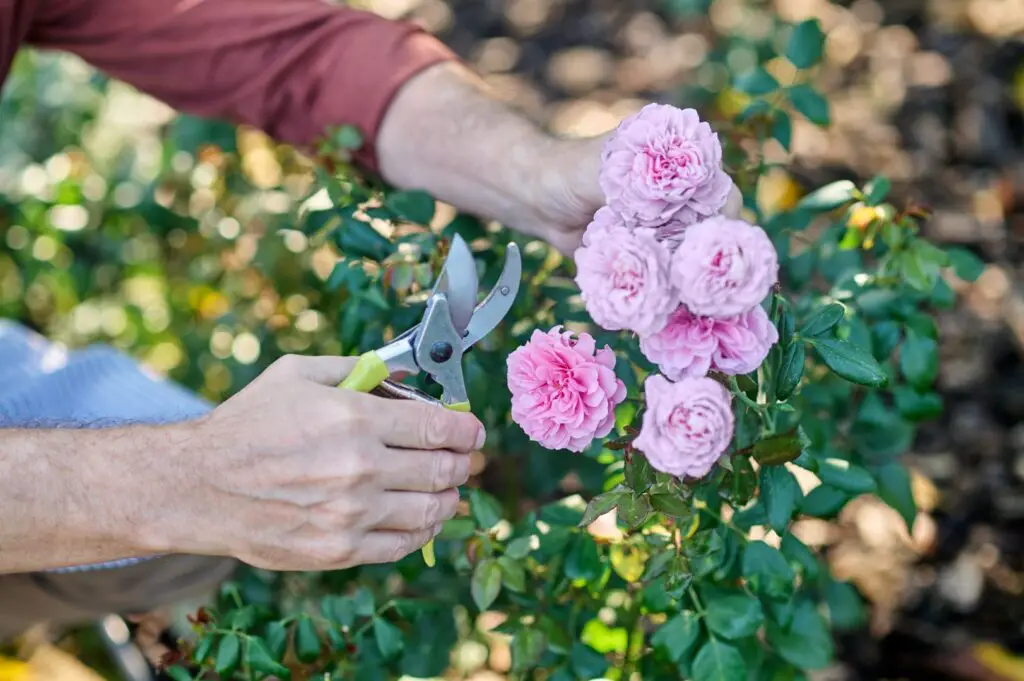
Rose Diseases to Watch For and Treat
Besides the insect problems above, roses are also susceptible to diseases, including black spot, powdery mildew, botrytis, canker, and rusts. To help keep your plants disease-free, make sure they are correctly pruned to encourage good airflow through the foliage and try to keep water off the leaves.
If you observe disease symptoms, remove infected canes using sterilized pruning shears and throw the plant material away. Then treat your plants with the appropriate bactericide or fungicide, depending upon the infection.
Considerations for Growing Roses In Containers
Growing roses in containers is a great option if you’re limited on space or live in a rental where you aren’t allowed to plant anything in the ground. Overall, caring for container-grown plants is quite similar, but there are a couple of things to consider.
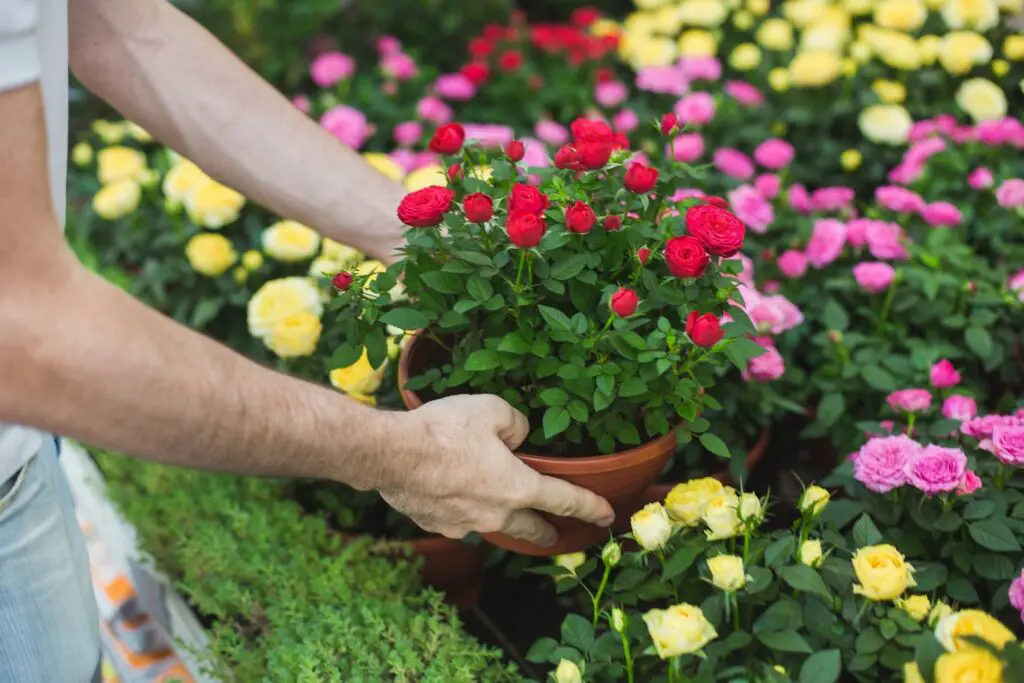
- Choose a type of rose that is suited for containers. Pick types that are shorter and more compact versus climbing roses.
- Make sure the pot is wide and tall enough to accommodate the root ball and big enough to keep from tipping over once the rose bush matures.
- Use a high-quality potting mix that holds moisture yet freely drains any excess. Don’t fill your containers with garden soil.
- Keep an eye on the moisture level in the pots. Containers dry out quicker than garden soil, so you need to water more often.
- Repot into larger containers when your plant outgrows the one it’s in, so the roots are constricted.

